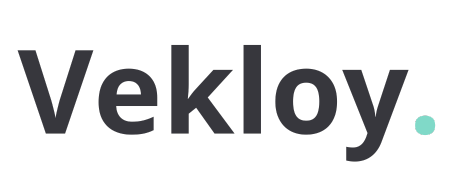Health Insurance Document Automation Explained: What Is CCM and Why It Matters

In today’s fast-paced digital age, the healthcare industry is under immense pressure to modernize operations while maintaining compliance and delivering top-notch service. One area that has seen major transformation is document automation, especially in health insurance. At the center of this shift is a powerful tool known as Customer Communication Management (CCM).
This blog dives into what CCM is, how it works in the context of health insurance, and why it's becoming essential for insurance providers, administrators, and customers alike.
Understanding Health Insurance Document Automation
Before we explore what is CCM, let’s first understand document automation in health insurance.
Health insurance companies generate a massive volume of documents daily—claim statements, explanation of benefits (EOBs), ID cards, policy documents, renewal notices, and more. Traditionally, managing these documents has been:
-
Time-consuming
-
Paper-intensive
-
Prone to human error
-
Costly
Health insurance document automation uses technology to streamline the creation, distribution, storage, and management of these documents. It ensures that the right information is sent to the right person, in the right format, at the right time—whether it's through email, a secure portal, SMS, or traditional mail.
This is where CCM comes into play.
What Is CCM (Customer Communication Management)?
Customer Communication Management (CCM) is a strategy and suite of tools used by organizations to design, deliver, and manage customer communications across multiple channels.
In health insurance, CCM platforms are used to:
-
Generate personalized documents at scale
-
Automate workflows for approval and delivery
-
Ensure compliance with HIPAA and other regulatory standards
-
Provide omnichannel communication (print, email, mobile, etc.)
-
Maintain a consistent brand and message
A modern CCM system does much more than just "send documents." It integrates data from different systems—claims processing, CRM, underwriting—and creates intelligent, interactive communications tailored to each policyholder.
Why CCM Matters in Health Insurance
The adoption of CCM in health insurance isn’t just a technological upgrade—it’s a strategic necessity. Here's why:
1. Enhances Operational Efficiency
Manual document handling slows down the claims process, member onboarding, and policy updates. CCM automates document creation and routing, drastically cutting down processing time and labor costs.
Example: An insurance company can auto-generate EOBs for thousands of members within minutes, using templates and data pulled directly from claim systems.
2. Reduces Human Error
Compliance errors in documents can lead to lawsuits or hefty penalties. Automated CCM systems apply rules and validations, reducing the chance of human error in sensitive documents.
3. Improves Member Experience
In an industry where communication is often complex and delayed, CCM allows insurers to send clear, personalized, and timely updates. Policyholders can receive real-time notifications, track claim status, and understand their benefits with ease.
4. Ensures Regulatory Compliance
Health insurers operate under strict laws like HIPAA, ACA, and state-level mandates. CCM systems come with built-in compliance templates, audit trails, and encryption features to ensure every document meets legal standards.
5. Supports Omnichannel Delivery
Today’s customers expect communication on their terms. Whether it’s a printed letter for older generations or a push notification for tech-savvy users, CCM delivers consistent messaging across channels—while maintaining accuracy and branding.
6. Enables Scalable Growth
As insurers grow and onboard more members, document volumes increase. CCM solutions can scale effortlessly, handling spikes in demand during open enrollment periods or emergencies without missing deadlines.
Key Features of a Health Insurance CCM Platform
When selecting the best CCM software for health insurance, here are the key features to look for:
1. Data Integration
Ability to pull data from multiple systems like:
-
Claims management systems
-
Policy administration
-
CRM platforms
-
Document repositories
2. Template-Based Design
Reusable templates for common documents like:
-
EOBs
-
Welcome kits
-
Renewal letters
-
ID cards
Templates allow faster updates and brand consistency.
3. Rules-Based Personalization
Use of logic and variables to personalize communications based on:
-
Member demographics
-
Plan types
-
Claim statuses
4. Secure Delivery and Tracking
Includes encryption, digital signatures, secure portals, and real-time delivery tracking to maintain trust and compliance.
5. Audit and Reporting Tools
Critical for maintaining regulatory compliance and internal accountability. Enables:
-
Tracking document history
-
Proving timely delivery
-
Auditing template changes
Use Case: CCM in Action
Let’s consider a real-world example.
A national health insurance provider sends out monthly EOB statements to over 2 million members. Previously, this was handled by a print vendor using a 10-day cycle. Errors in address data, manual uploads, and reprints cost the company over $1 million annually.
After implementing a CCM platform:
-
EOBs were auto-generated using real-time claim data
-
Digital versions were sent instantly to the member portal
-
Physical copies were queued only for members without digital opt-ins
-
Reprint requests dropped by 90%
-
Customer satisfaction increased significantly
Challenges and Considerations
While CCM offers numerous benefits, it’s not without challenges:
1. Integration Complexity
Connecting CCM to legacy systems can be technically challenging. However, modern APIs and cloud platforms are making this easier.
2. Change Management
Shifting from manual to automated workflows requires staff training and a cultural shift. Leadership buy-in and phased rollouts help ease the transition.
3. Vendor Selection
Not all CCM vendors understand the nuances of healthcare regulations. Choosing a vendor with domain experience is crucial.
The Future of CCM in Health Insurance
The future of CCM in health insurance is heading toward intelligent automation and AI-powered personalization. Expect:
-
Chatbots integrated with CCM to handle document queries
-
Predictive analytics to trigger proactive communication
-
Natural language generation (NLG) to simplify document language
-
Real-time collaboration tools for members and agents
In essence, CCM is evolving from document automation to smart, adaptive communication management—where every interaction is meaningful, measurable, and member-centric.
Conclusion
Customer Communication Management is no longer a “nice-to-have” for health insurers—it’s a must-have. By automating and personalizing communications, CCM transforms how insurers interact with policyholders, improves compliance, and drives operational efficiency.
As healthcare continues its digital transformation, CCM stands out as a vital tool in delivering clear, consistent, and compliant communications that truly put the customer first.
Whether you're a payer, provider, or plan administrator, investing in CCM now means being prepared for the future of healthcare communication.
What's Your Reaction?



















































